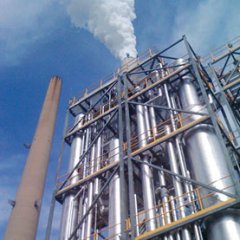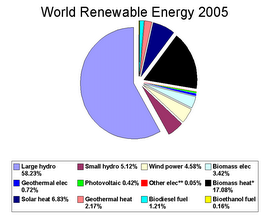Global warming and energy
 The world is on track for dangerous climate change, having nearly lost room for further pollution in the mix of gases that make up the atmosphere. Despite a rise in clean, renewable energy supplies in certain countries, and a partial shift from coal to natural gas in others, global greenhouse gas pollution continues to rise—and at an increasing pace in the most recent years.
The world is on track for dangerous climate change, having nearly lost room for further pollution in the mix of gases that make up the atmosphere. Despite a rise in clean, renewable energy supplies in certain countries, and a partial shift from coal to natural gas in others, global greenhouse gas pollution continues to rise—and at an increasing pace in the most recent years.
"Economic and population growth are drivers for emissions and they have outpaced the improvements of energy efficiency, " said Ottmar Edenhofer, economist at the Potsdam Institute for Climate Impact Research in Germany and co-chair of Working Group III of the Intergovernmental Panel on Climate Change (IPCC). Edenhofer spoke at an April 13 press conference in Berlin, where IPCC's Working Group III released its report on the subject of how to mitigate the climate problem.
Nations worldwide have to make major change in energy supply, soon, if they are to restrain climate change to no more than 2 degrees Celsius, Edenhofer and others said. That is a threshhold beyond which serious harm is likely to occur to human civilization as well as the natural world, by the IPCC and other's scientific judgment.
Geoengineering will probably also be required to solve the planet’s global warming pollution problem, Edenhofer and the report noted. The world will also need a crash course in technologies to capture carbon dioxide—the primary greenhouse gas— from the atmosphere to restrain global warming. Without such CCS hopes of restraining climate change to no more than 2 degrees C warming are "no longer feasible, " Edenhofer argued. "In the end, two degrees means the phase out of fossil fuels without CCS entirely in the next few decades."
Energy mix
Climate change is an energy problem. Burning fossil fuels to produce electricity or heat is responsible for roughly half of global warming pollution. Tacking on industry in general, including producing cement, steel, plastics and chemicals, accounts for 78 percent of greenhouse gases, which invisibly accumulate in the atmosphere and trap extra heat. Such climate changing pollution continues to increase—in 2010, the world emitted some 49 billion metric tons of greenhouse gases, thanks largely to increased coal burning in countries such as China. The number has continued to increase in recent years. In fact, human society added half of the global warming pollution that is in the atmosphere in just the last 40 years.
Restraining global warming to no more than 2 degrees Celsius will require changing how the world produces and uses energy to power its cities and factories, heats and cools buildings, as well as moves people and goods in airplanes, trains, cars, ships and trucks, according to the IPCC. Changes are required not just in technology, but also in people's behavior. "We can reduce through substantial behavioral change and lifestyle...


 Renewable energy is energy which comes from natural resources such as sunlight, wind, rain, tides, and geothermal heat, which are renewable (naturally replenished). About 16% of global final energy consumption comes from renewables, with 10% coming from traditional biomass, which is mainly used for heating, and 3.4% from hydroelectricity. New...
Renewable energy is energy which comes from natural resources such as sunlight, wind, rain, tides, and geothermal heat, which are renewable (naturally replenished). About 16% of global final energy consumption comes from renewables, with 10% coming from traditional biomass, which is mainly used for heating, and 3.4% from hydroelectricity. New...